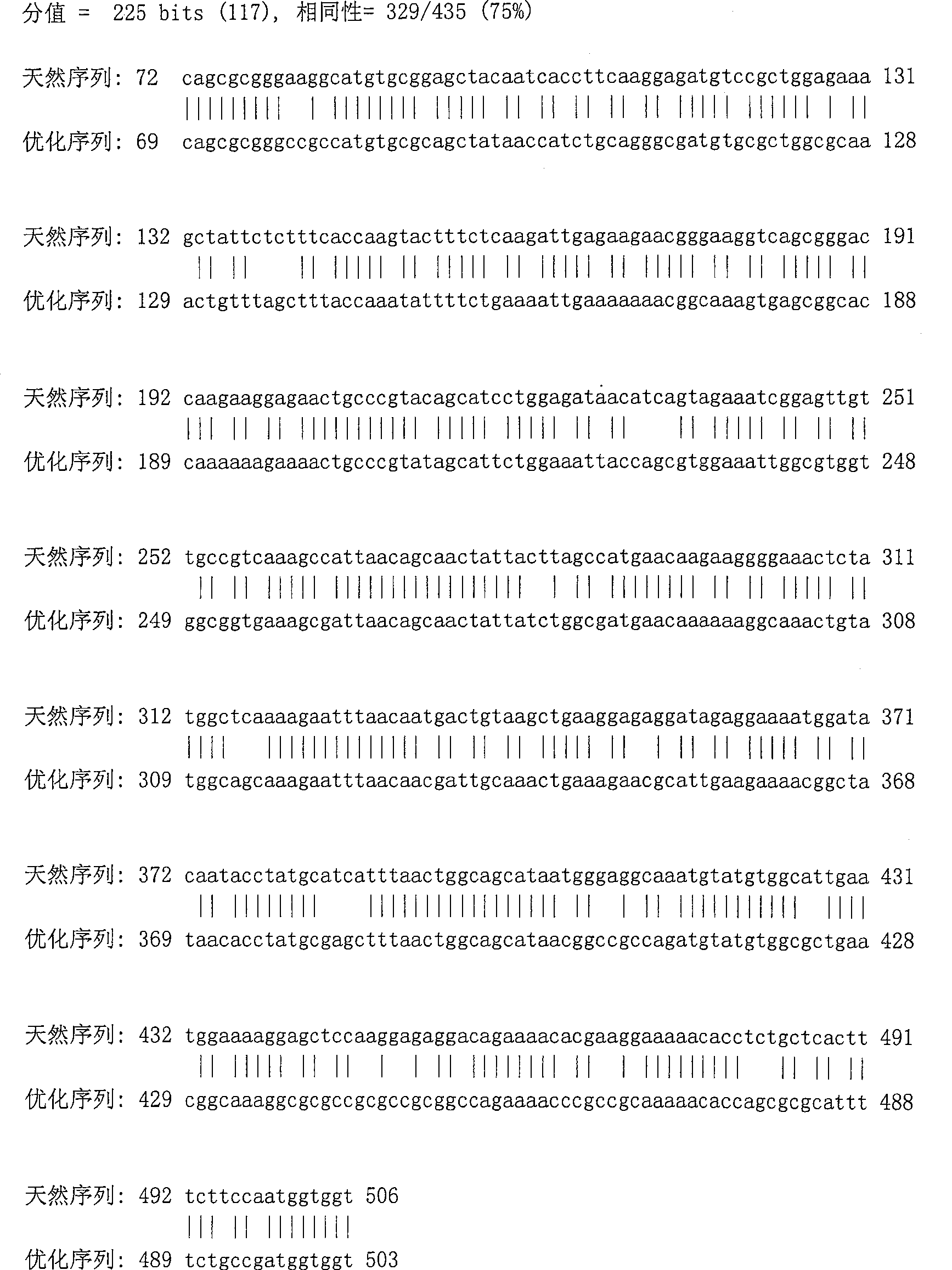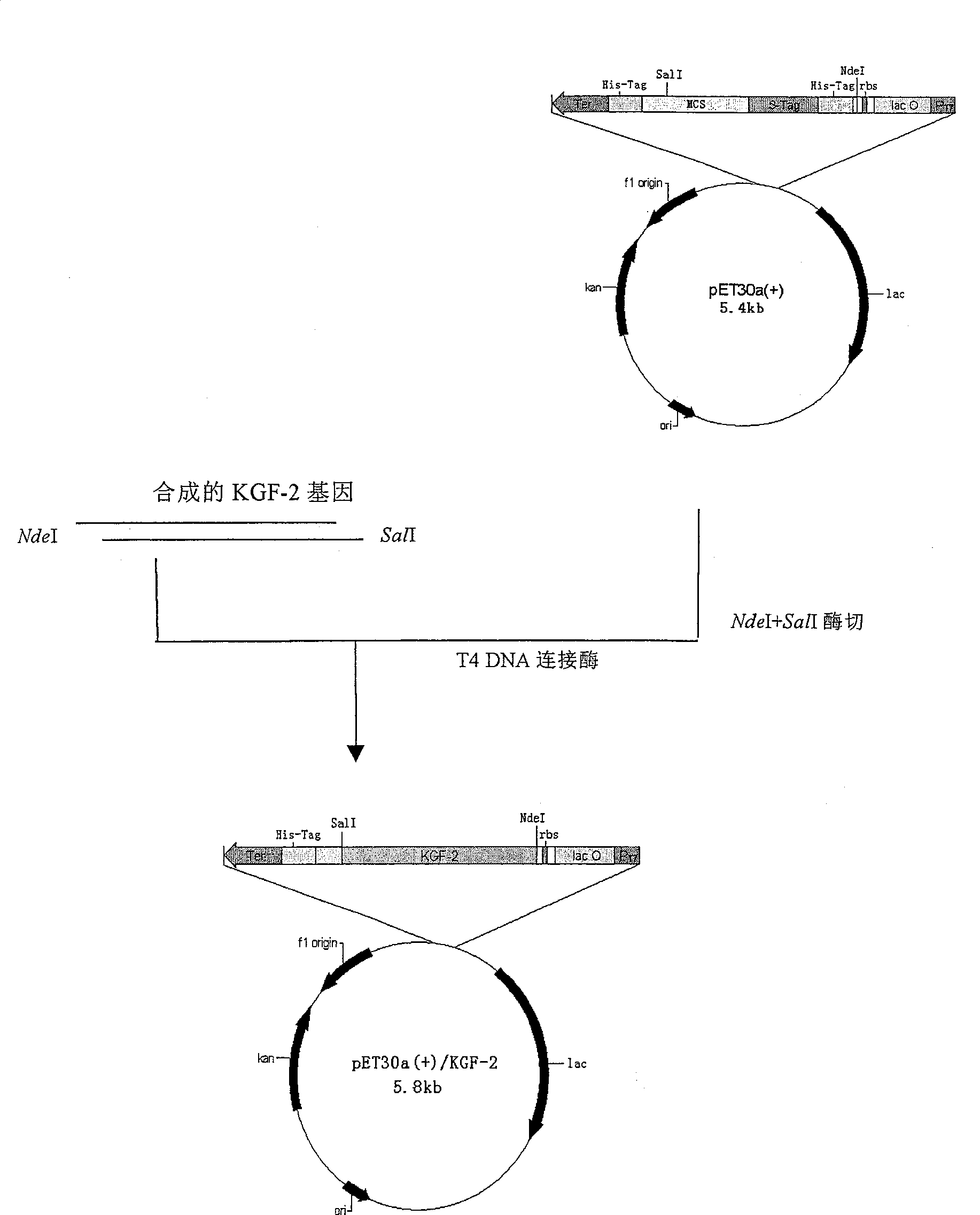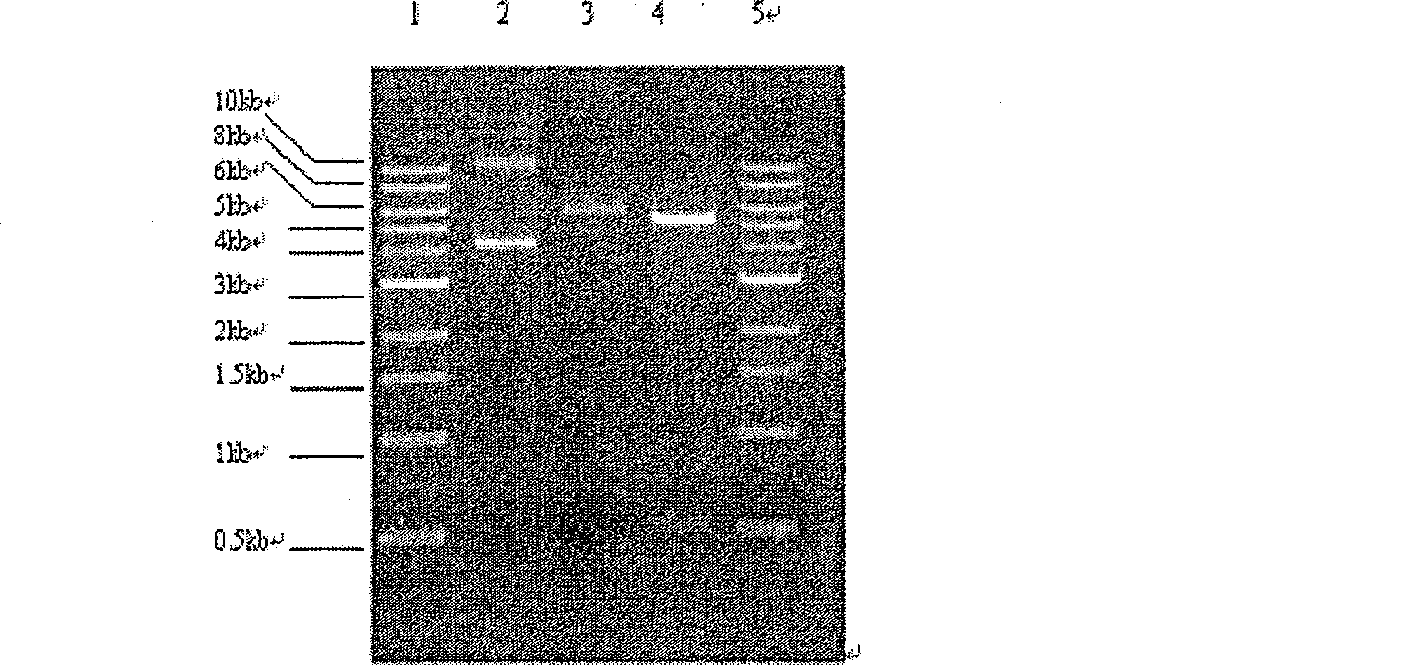Production process of recombinant human horny cell growth factor-2
A keratinocyte and growth factor technology, applied in the field of genetic engineering, can solve the problems of limited expression and low efficiency of human keratinocyte growth factor-2
- Summary
- Abstract
- Description
- Claims
- Application Information
AI Technical Summary
Problems solved by technology
Method used
Image
Examples
Embodiment 1
[0065] Construction of engineering bacteria expressing rhKGF-2
[0066] 1. Synthesis of target gene
[0067] According to the known natural amino acid sequence of hKGF-2, according to E. coli codon preference and considering the elimination of hairpin structure and other unfavorable secondary structures for expression, the coding sequence of hKGF-2 is designed without changing the amino acid sequence (As shown in SEQ ID NO:1). Entrusted Shanghai Shenggong Biological Engineering Technology Co., Ltd. to synthesize the optimized sequence of hKGF-2 designed.
[0068] When artificially synthesizing the full sequence of the recombinant human keratinocyte growth factor-2 (rhKGF-2) gene, the NdeI site is introduced at the 5'end of the gene and the Sal I site is introduced at the 3'end.
[0069] 2. Construction of expression plasmid-pET30a(+) / rhKGF-2 and transformation of host bacteria
[0070] The expression plasmid is the pET30a(+) expression vector purchased from Invitrogen Company (the...
Embodiment 2
[0077] Selection of suitable expression vector
[0078]According to the method similar to Example 1, insert SEQ ID NO:1 into several different expression vectors, such as pTrc / HisA (purchased from invitrogen company), pBAD / HisA (purchased from invitrogen company), pSE380 (purchased from invitrogen company) ) At the same restriction sites (NdeI / SalI) to obtain plasmids pTrc / HisA / rhKGF-2, pBAD / HisA / rhKGF-2, pSE380 / rhKGF-2.
[0079] The plasmids pTrc / HisA / rhKGF-2, pBAD / HisA / rhKGF-2, pSE380 / rhKGF-2 were respectively transformed into corresponding host bacteria, and resistant strains were selected. A shake flask test was carried out with the engineered bacteria containing plasmid pET30a(+) / rhKGF-2. After 2 hours of induction by IPTG (or arabinose), the target protein expressed by the engineered bacteria containing plasmid pET30a(+) / rhKGF-2 was expressed The amount of the target protein expressed by the engineered bacteria containing plasmids pTrc / HisA / rhKGF-2, pBAD / HisA / rhKGF-2, pSE380...
Embodiment 3
[0082] Choose the best medium
[0083] Pick the E. coli BL21(DE3) (hereinafter referred to as "engineered bacteria") monoclonal that was transformed into pET30a(+) / rhKGF-2 prepared in Example 1, and inoculate it into the LB first-level seed solution, and cultivate for 17-20hr; Two-stage inoculation in a 250ml LB 1L Erlenmeyer flask at a ratio of 1:30, incubate for about 2~3hr, wait for OD 600 It can be fermented in the tank to reach 0.5~1 (M9 medium, modified M9-2 medium, or modified M9-4 medium), pH 6.8~7.2, temperature 37℃, DO>50%, wait for OD 600 After reaching 3~4, add 1mM IPTG to start induction. After the pH rises (the carbon source is exhausted), add 10% carbon source (glucose) and nitrogen source feed to maintain the pH at 6.8~7.2 after the pH rises (the carbon source is exhausted). . The samples were detected by SDS-PAGE (and scanned) to determine the protein content.
[0084] The protein content determination results are as Figure 4 Shown. The results show that both M9 ...
PUM
 Login to View More
Login to View More Abstract
Description
Claims
Application Information
 Login to View More
Login to View More - R&D
- Intellectual Property
- Life Sciences
- Materials
- Tech Scout
- Unparalleled Data Quality
- Higher Quality Content
- 60% Fewer Hallucinations
Browse by: Latest US Patents, China's latest patents, Technical Efficacy Thesaurus, Application Domain, Technology Topic, Popular Technical Reports.
© 2025 PatSnap. All rights reserved.Legal|Privacy policy|Modern Slavery Act Transparency Statement|Sitemap|About US| Contact US: help@patsnap.com



